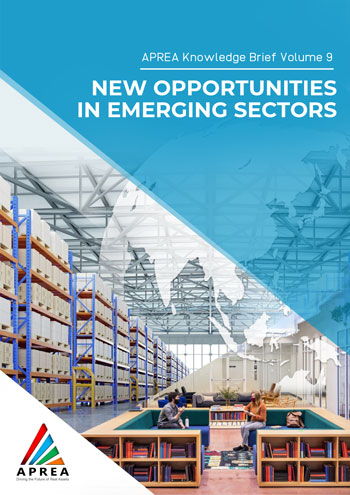Cushman & Wakefield’s Office Fit Out Cost Guides provide an indication of the fit out construction costs for occupiers across key cities around the world. Whether it’s a basic, collaborative, or advanced hybrid fit out requirement, these Guides compiled by our Project & Development Services team serves to assist occupiers in defining their capital planning and relocation budgets.
The Guides include a comprehensive fit out cost section covering furniture, professional fees, mechanical & electrical works, construction works, audio visual/IT and other miscellaneous costs, as well as reinstatement and retrofit costs.
Estimated costs provided in our Guides are indicative of market averages based on certain assumptions. Extra costs for specific projects may defer to those presented – we recommend engaging a Project & Development Services professional to advise on precise costings base don your unique construction requirements.
Download the Report Read MoreThe growth of major life sciences companies has started to normalise after a period of significant growth during the height of the pandemic. Weaker revenue growth and capital funding in the face of slowing global economies is shaping a new competitive landscape for the life sciences sector and the need for companies to rethink their real estate strategy.
This report explores the latest life sciences real estate trends and their impact on real estate strategy. It also examines the latest developments in R&D Laboratory and Office portfolios, as well as investment demand.
Key highlights are below:
This report was originally published in https://www.cbre.com/insights/reports/2023-asia-pacific-life-sciences-real-estate-trends
Download the Report Read MoreReleased in December 2022, the Hong Kong Innovation & Technology Development Blueprint maps out the overall direction and key strategies for the city’s I&T development over the next five to 10 years with the objective of making the city more competitive and diversifying its sectors. This research paper provides the first in-depth review of the strategic plan towards developing Hong Kong into a world-leading hub for I&T and how it will bring valuable opportunities to the I&T sector and the city’s future development.
This report was originally published in https://www.colliers.com/en-hk/research/hong-kongs-i-and-t-future-and-its-property-implications
Download the Report Read MoreThe office sector has shifted and while asset owners need to adjust so too do flexible workspace operators, otherwise flexible workspace operators, who were once seen as disruptors to the office market, will themselves be disrupted.
Shifting occupier profiles are leading to white space opportunities. We have seen an uptick in demand for enterprise solutions and turnkey offices. We believe this presents an opportunity for a managed suite product, which is a product yet to become mainstream in many Asia Pacific markets. The question is: who is best placed to deliver this?
Meanwhile, asset owners are aiming to placemake with holistic, integrated, hospitality-led amenity stacks to elevate the occupier experience. Is this an opportunity for a new type of operator?
This is an incredibly exciting time, with occupier trends driving innovation in how the market delivers the workplace of the future. This may be the dawn of Office 2.0; at the very least, it is the dawn of Flex 2.0.
This report was originally published in https://www.knightfrank.com/research/report-library/the-flexible-workspace-outlook-report-2023-2023-10012.aspx
Download the Report Read More
Amid the current challenging times for the global economy, the Asia Pacific region remains a bright spot. This is in part due to new and compelling opportunities for investors, especially in asset classes that go beyond the traditional sectors of residential, commercial, and retail.
This issue of Knowledge Brief explores the case for investing in niche and emerging sectors, which have been outperforming traditional asset classes. These include multifamily housing, flexible office space, senior living, healthcare and life sciences, renewables, modern industrial parks, warehousing, data centres, and more.
What are the trends and opportunities in the regional investment landscape? How has technology, as well as changing lifestyles and working practices, caused investors to rethink their strategies?
The articles in this volume discuss how opportunities abound in the real assets industry, with robust prospects for the Asia Pacific.
Download the Report Read More